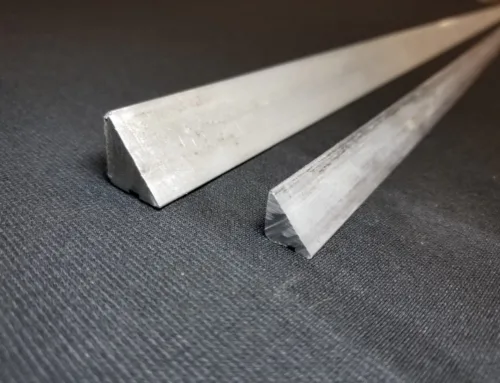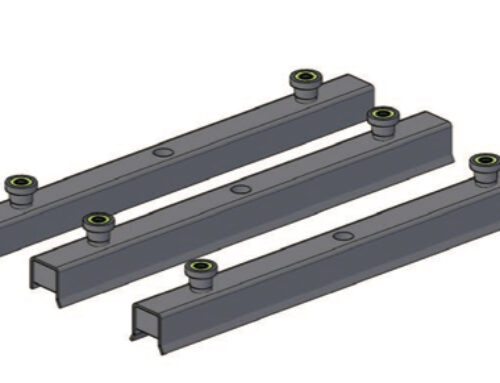Is cobalt magnetic? Absolutely—cobalt is one of the rare metals that’s naturally ferromagnetic at room temperature, standing alongside iron and nickel. What sets cobalt apart? Its Curie temperature tops the list at 1121 °C, meaning it stays magnetic far longer under extreme heat. Whether you’re curious about its strength, how it stacks against neodymium magnets, or its role in high-temp applications, this guide cuts through the noise to give you the clear, expert facts you need. Let’s get into why cobalt’s magnetic properties still matter today.

Is cobalt magnetic
The Science: Why Cobalt Is Ferromagnetic
Yes, cobalt is magnetic—specifically, it is ferromagnetic. But why? The answer lies deep in its atomic structure and magnetic domains.
Electron Configuration and Unpaired 3d Electrons
- Cobalt has the electron configuration:
[Ar] 3d⁷ 4s² - Out of the seven 3d electrons, several remain unpaired.
- These unpaired electrons have spins that act like tiny magnets.
- When many spins align in the same direction, they create a strong net magnetic field.
Magnetic Domains and Spontaneous Magnetization
- Cobalt atoms group into small regions called magnetic domains.
- Inside each domain, electron spins align uniformly.
- Though domains are randomly oriented in an unmagnetized piece, when aligned, these domains produce spontaneous magnetization, giving cobalt its magnetic power.
Ferromagnetic vs Paramagnetic vs Diamagnetic
| Property | Ferromagnetic (Cobalt) | Paramagnetic | Diamagnetic |
|---|---|---|---|
| Electron spin alignment | Strong, spontaneous | Weak, only with field | Opposes external field |
| Magnetic behavior | Permanent magnetism | Temporary magnetism | Very weak repulsion |
| Common examples | Cobalt, iron, nickel | Aluminum, platinum | Copper, gold, bismuth |
In short, cobalt’s unpaired electrons and domain structure make it a classic ferromagnetic element, capable of becoming a strong permanent magnet when magnetized.
How Strong Is Cobalt Compared to Other Magnetic Materials?
Pure cobalt has a saturation magnetization of about 1.79 Tesla (T), which means it can generate a strong magnetic field when fully magnetized. To put that in perspective, iron sits a bit higher at around 2.15 T, and nickel is lower, at about 0.6 T. But pure metals rarely tell the whole story in real-world magnets.
Here’s a quick look at how pure cobalt compares to common magnetic materials:
| Material | Saturation Magnetization (T) | Typical Use |
|---|---|---|
| Pure Cobalt (Co) | 1.79 | Rarely used alone in magnets |
| Iron (Fe) | 2.15 | Core magnetic material |
| Nickel (Ni) | 0.6 | Alloy base |
| Alnico (Al-Ni-Co) | ~1.0 | Moderate strength, stable temp |
| Samarium-Cobalt (SmCo) | 0.9 – 1.1 | High-temp, rare-earth magnets |
| Neodymium (NdFeB) | 1.2 – 1.4 | Strongest commercial magnets |
In terms of real-world performance, magnets are judged by more than raw strength. Remanence (residual magnetism), coercivity (resistance to demagnetization), and energy product (max energy density) all matter:
- Samarium-Cobalt (SmCo) magnets are prized for their outstanding coercivity and temperature stability, with energy products up to 28 MGOe.
- Neodymium magnets (NdFeB) lead in sheer strength, boasting energy products over 50 MGOe, but they lose performance at higher temperatures.
- Alnico magnets, which include cobalt, offer moderate strength but exceptional temperature stability and are less brittle.
While cobalt’s pure magnetic strength isn’t record-breaking, its value shines in alloys and permanent magnets, especially where temperature resistance is key.
When it comes to cobalt magnets, the two main types you’ll find in the market are Samarium-Cobalt (SmCo) magnets and Alnico (Al-Ni-Co) magnets.
Samarium-Cobalt (SmCo) Magnets
SmCo magnets come in two common grades: 1:5 and 2:17 (referring to the ratio of samarium to cobalt in the alloy). These magnets are prized for their extremely high temperature resistance, able to operate reliably up to around 350 °C, making them some of the best high-temperature permanent magnets available. They also resist corrosion well, so they don’t require extra coatings.
Advantages:
- Outstanding temperature stability
- High corrosion resistance
- Strong magnetic performance stable at elevated temperatures
Disadvantages:
- Brittle and prone to chip or crack if mishandled
- More expensive than other magnets
- Usually not as strong as neodymium (NdFeB) magnets in raw magnetic power
Alnico (Al-Ni-Co) Magnets
Alnico magnets, made from aluminum, nickel, and cobalt, have been around since the early 20th century. Though they don’t match the magnetic strength of SmCo or neodymium magnets, Alnico magnets offer moderate strength and are famous for their excellent temperature stability, withstanding heat even better than many other magnet types before SmCo magnets became popular.
Key traits:
- Good temperature stability (better than most except SmCo)
- Durable and mechanically tougher than SmCo
- Moderate magnetic strength
- Historically important before rare-earth magnets took over
Both types fill important niches depending on your needs—whether it’s extreme heat tolerance or balanced strength with durability. If you’re after magnets with exceptional heat resistance, samarium-cobalt is typically the go-to choice, especially in aerospace or specialized industrial uses.
For those wanting an option with solid performance and less brittleness, Alnico magnets remain relevant despite newer technologies.
If you’re exploring cobalt magnets for industrial or green energy uses, it’s worth comparing these options on a site specializing in magnets for green energy to see what best fits the application.
Temperature and Magnetism: Cobalt’s Superpower
Cobalt’s biggest magnetic advantage is its incredibly high Curie temperature—the point where it loses its magnetism. Pure cobalt holds strong magnetically up to about 1121 °C, far above iron or nickel. This means cobalt-based magnets can keep their magnetic power even in extreme heat.
Samarium-Cobalt (SmCo) magnets, which combine cobalt with rare earth elements, have a lower Curie temperature around 300-350 °C. While that’s much lower than pure cobalt, it’s still way higher than typical neodymium magnets. Because of this, SmCo magnets are prized in industries like aerospace and space exploration where magnets must perform reliably at high temperatures, such as in jet engines.
Thanks to this thermal resilience, SmCo magnets remain a go-to choice for harsh, hot environments where others would fail. This makes cobalt’s magnetic properties extremely valuable beyond just raw strength or size.
For more about how different magnets perform under heat, you can check out detailed info on anisotropic vs isotropic magnets.
Is Pure Cobalt Used as a Magnet in Industry?
Pure cobalt is rarely used as a magnet in industry. While it is naturally ferromagnetic, its cost and mechanical weakness make it impractical for most applications. Instead, industries prefer cobalt alloys or cobalt-based magnets like samarium-cobalt (SmCo) which offer better performance and durability. Occasionally, bonded cobalt powder is used in niche magnet designs, but these cases are uncommon due to limited strength and higher expense. For most magnetic needs, cobalt is better suited as part of an alloy rather than in its pure form.
Cobalt in Modern EV Batteries vs Cobalt in Magnets – Clearing the Confusion
It’s important to clear up a common mix-up: the cobalt used in permanent magnets is metallic cobalt, which is very different from the cobalt compounds found in lithium-ion (Li-ion) batteries for electric vehicles (EVs). In magnets, cobalt is prized for its ferromagnetic properties, especially in samarium-cobalt (SmCo) alloys. Meanwhile, EV batteries mainly use cobalt in chemical forms like cobalt hydroxide or cobalt sulfate, which play a role in the battery’s electrochemistry but don’t exhibit magnetism.
Despite these differences, both industries share challenges around supply chain stability and ethical sourcing. Mining cobalt responsibly is crucial whether it ends up in high-performance magnets used in aerospace or in the batteries powering electric cars. Understanding this distinction helps consumers and manufacturers appreciate cobalt’s diverse roles without confusion.
For more on cobalt’s role in magnets and their performance, see our detailed comparison of samarium cobalt and neodymium magnets.
Common Myths and FAQs about Cobalt Magnetism
Is cobalt more magnetic than neodymium?
Not exactly. While neodymium magnets are stronger at room temperature, cobalt-based magnets like samarium-cobalt (SmCo) outperform neodymium when it comes to high temperature resistance. Cobalt’s magnetic properties remain stable even at temperatures where neodymium magnets lose strength.
Will a regular magnet pick up cobalt?
Yes, cobalt is naturally ferromagnetic and will be attracted to a regular magnet quite strongly. You can easily see this with a simple fridge magnet.
Is cobalt magnetic without being magnetized?
Yes, cobalt itself is inherently magnetic due to its atomic structure and unpaired 3d electrons. It can be permanently magnetized quite easily, which is why cobalt is a key component in various permanent magnets.
If you’re curious about temperature effects on magnets like neodymium and cobalt, check out this detailed guide on the effect of heating neodymium magnets.
Practical Applications of Cobalt-Based Magnets Today (2025)
Cobalt-based magnets like SmCo remain essential in several advanced fields due to their unique combination of strength and temperature resistance. Here’s where you typically find them:
- Aerospace & Defense: Their high Curie temperature and corrosion resistance make them ideal for jet engines, guidance systems, and military equipment where reliability under extreme conditions is crucial.
- Medical Devices (MRI): SmCo magnets provide stable, strong magnetic fields needed in MRI machines, ensuring clear imaging quality without magnetic degradation over time.
- High-Temperature Motors and Generators: These magnets perform reliably in motors and generators exposed to high heat, such as those used in electric vehicles or industrial equipment.
- Oil & Gas Downhole Tools: The harsh environments deep underground demand magnets that can take intense heat and corrosion — cobalt-based magnets fit the bill perfectly.
This practical versatility is why cobalt magnets still hold a strong position despite newer materials emerging.
Future Trends: Will We Still Need Cobalt in Magnets?
The future of cobalt in magnets is a hot topic as researchers push to reduce or even eliminate cobalt use in rare-earth magnets. This is mainly driven by the metal’s cost and ethical sourcing concerns. New materials with less or no cobalt are emerging, aiming to match or exceed the magnetic performance of traditional cobalt-based magnets.
However, the reality today is that samarium-cobalt (SmCo) magnets remain irreplaceable in specific high-demand applications. Their exceptional temperature resistance and stability keep them at the forefront for aerospace, defense, and other industries where reliability under extreme conditions is a must.
While the magnet market evolves, cobalt’s unique magnetic properties and thermal endurance ensure it will still play a critical role—especially in niches where alternatives can’t yet compete. For an in-depth look at permanent magnet uses, including the role of high-temperature magnets, check out this detailed overview of new applications of permanent magnets.





Leave A Comment